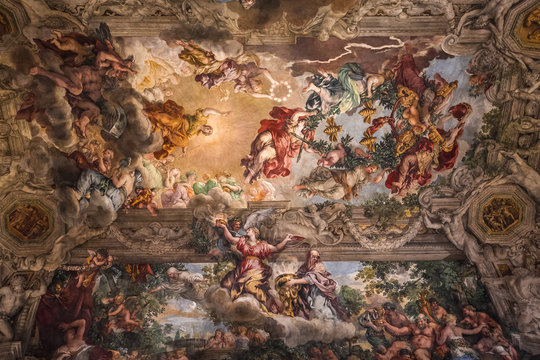
The Time Traveler’s Guide to Period Architecture
So, you’ve stumbled upon a mysterious pocket watch tucked inside a crumbling book in the corner of a forgotten library wing. Naturally, you press the shiny button (because who wouldn’t?), and suddenly—whoosh—you’re a time traveler. But not just any time traveler. You’re an architectural time traveler. Your job? To flit through history and accidentally inspire (or disrupt) the most iconic design movements of all time. No pressure.
You begin in Ancient Egypt, where the sun is hot, the eyeliner is bold, and everyone’s obsessed with geometry. You marvel at the pyramids, wondering why no one thought to include a rooftop café. As you casually suggest the concept of balconies to a royal architect, he furrows his brow, carves a triangle in the sand, and starts muttering something about “sacred proportions. ” You make a mental note: maybe balconies were too soon. Though, for what it’s worth, they did invent clerestory windows, so you’re not completely out of place.
One sandy gust later, you’re in Ancient Greece, where columns are having a moment. Doric, Ionic, Corinthian—it’s a full-on catwalk of fluted fashion. You suggest asymmetry for spice and get politely shunned. Here, perfection is the name of the game. Still, you sneak in a sketch of a cantilevered roof and leave it behind. Who knows? Maybe some aspiring sculptor will find it and start dreaming of drama above the lintel. (You wisely avoid suggesting spiral staircases—they’re still a few centuries and a whole Roman Empire away.)
Then—bam—you land in Ancient Rome, where everything is bigger, bolder, and built to last 2,000 years. Aqueducts, amphitheaters, domes—Rome is doing everything and doing it in concrete. Spiral staircases? Oh yes. The Romans were among the first to actually use them regularly, especially in lighthouses and towers. You don’t need to leave a sketch—just a high-five for good engineering. You sit on the steps of the Colosseum, sip diluted wine, and wonder if anyone in the 21st century will ever build a stadium that breathes this kind of drama.

Then—clang!—you’re flung into Medieval Europe, where everything is dark, pointy, and smells vaguely of roast turnips. You wander through a Gothic cathedral-in-progress, admiring their obsession with stained glass and flying buttresses. You pitch the idea of natural light and open floor plans, only to be accused of sorcery. You take your leave, narrowly escaping with your eyebrows intact. But you have to admit: those spires do hit different.
Your next stop is Renaissance Italy, and suddenly everyone’s painting ceilings and having architectural existential crises. You bump into a young da Vinci and whisper, “Try sketching a helicopter. ” He winks. You wink. Florence is full of arches, domes, and people saying “perspective” every five minutes like it’s a new skincare trend. You wander past Brunelleschi’s dome and feel a chill—this is architecture leveling up. Here, space is sacred, proportions divine, and yes, maybe your balcony idea would finally get a hearing.
Then it’s off to 18th-century France, and let’s be honest—you’ve never seen this much gold in your life. Baroque and Rococo architecture are drunk on drama and dripping in curls and cherubs. You suggest minimalism, and someone faints. You quietly retract your IKEA catalog and instead propose… more chandeliers. It’s fine. We all adapt.
Suddenly, you’re in Bauhaus Germany, 1920s. Everything is clean, smart, and suspiciously monochrome. You love it. You want to stay. But as you sip espresso from a perfectly cylindrical mug, you’re reminded that you’re not supposed to belong anywhere. You leave behind a sketch of a wavy chair just to mess with them.
Then comes the Postmodern era, where rules are for losers, facades are fun again, and buildings wear their sarcasm on their sleeves. You finally feel seen. You contribute nothing because everyone’s already doing the most. You laugh, applaud, and teleport out before anyone starts quoting Derrida.

And just when you think it’s over—you land smack in the future. Everything is made of sustainable algae-based concrete, walls are digital canvases, and buildings adjust their moods based on your emotional state (spoiler: your building knows you’re stressed and is playing ambient whale music). You realize, maybe for the first time, that architecture has always been a little bit magic—a dance between time, need, imagination, and a touch of chaos.
You return home, a bit dizzy, with pockets full of sketches from every era, a few mysterious bruises, and a sudden craving for Bauhaus coffee. Architecture, you’ve learned, isn’t a straight line. It’s a squiggly, whimsical map full of bold moves, regrets, divine proportions, and windows that still don’t open properly. And maybe—just maybe—you had a hand in it all.




Comments (2)
Areeba Munir
Super fun way to dive in the history of Architecture! LOVED READING THIS.
Excellent writing ✨️
Sara Farooq
Thanks Love! I’m really glad you enjoyed it! Whenever you have time, read the rest too!!